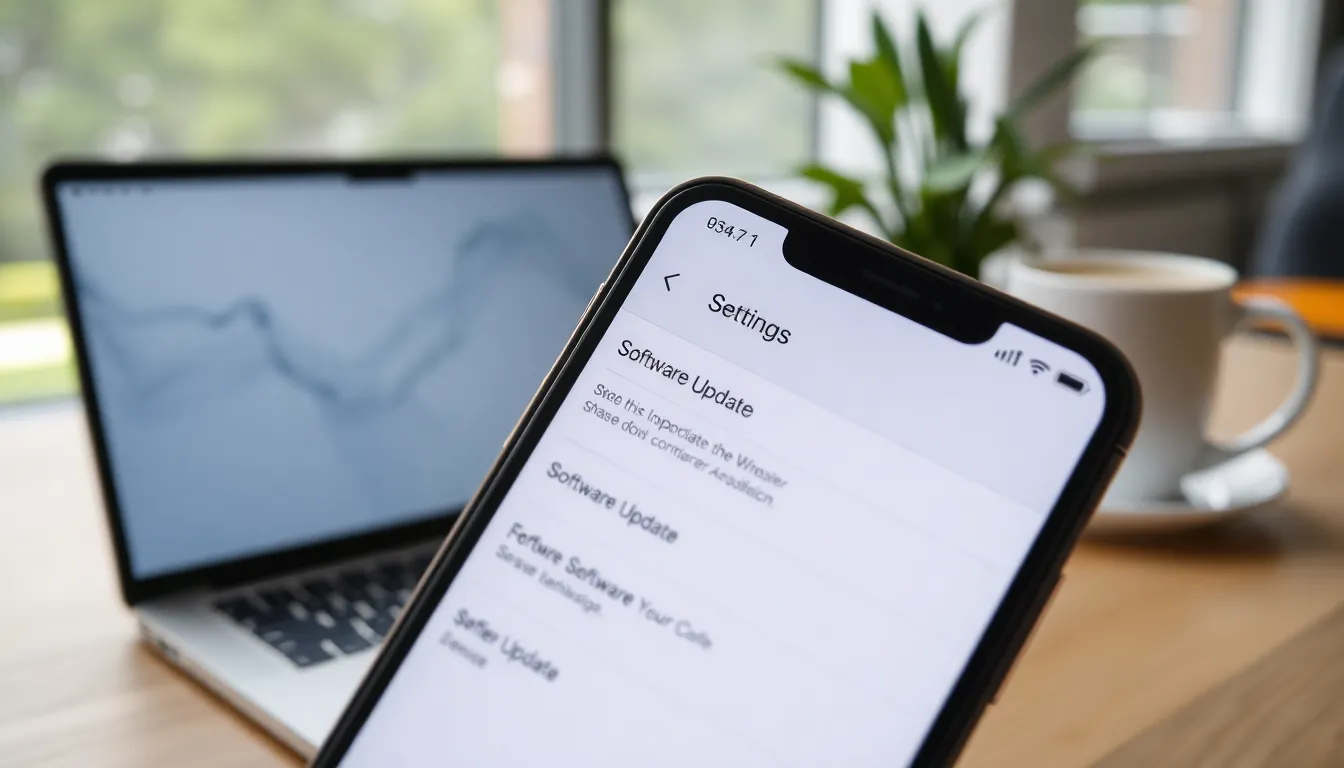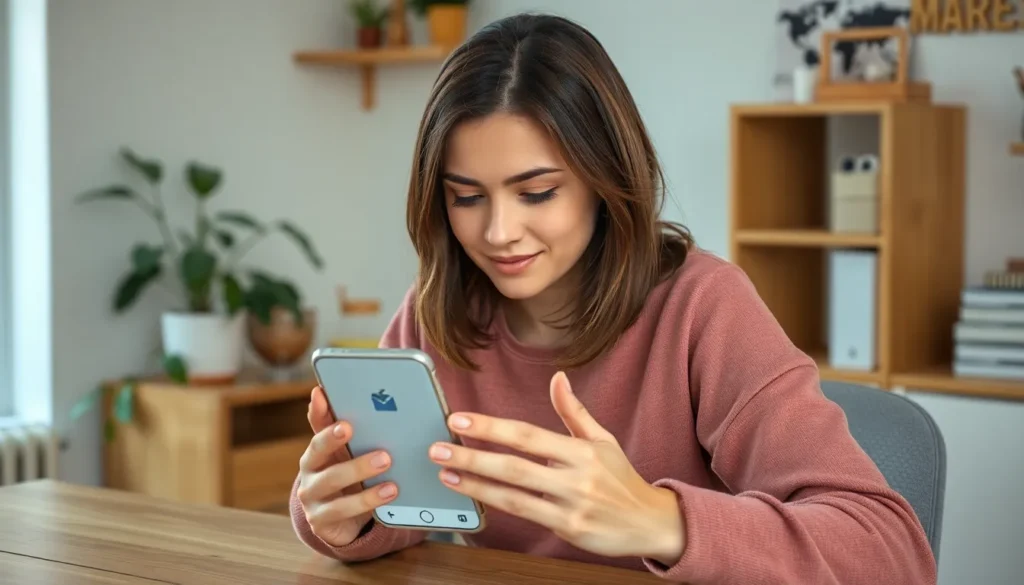Table of Contents
ToggleChanging your Gmail password on an iPhone might sound like a task fit for a tech wizard, but it’s easier than finding a cat video on the internet. Whether you’ve decided to up your security game or simply forgot your old password after a late-night binge of scrolling, this guide’s got you covered.
Understanding Gmail Password Change
Changing a Gmail password on an iPhone enhances account security and helps regain access after forgetting credentials. Start by opening the Settings app on the iPhone. Scroll down and select Mail, then choose Accounts. Tap on the Gmail account you wish to modify.
Once inside, look for the option labeled Account. You’ll find a section dedicated to email details such as Name and Email. This area also includes the Password field, which needs updating. Tap on Password, enter the new password, and confirm it.
Utilize a strong password for better protection. A strong password typically combines uppercase letters, lowercase letters, numbers, and special characters.
After entering the new password, select Done to save the changes. Ensure that the changes sync across all devices using the Gmail account.
Check for confirmation messages indicating the password update was successful. If problems arise, double-check the entered password for accuracy.
Maintaining updated passwords regularly bolsters account security. When sharing devices or in public settings, changing passwords promptly helps protect sensitive information.
Preparing for the Password Change

Changing a Gmail password on your iPhone involves some preparation steps. First, users should ensure all important information is backed up to avoid data loss.
Backing Up Important Information
Backing up important information prevents complications during the password change process. Users can save contacts, emails, and notes to iCloud or another cloud service. They should also consider saving any stored passwords or sensitive information elsewhere, like a password manager. Regularly backing up information provides peace of mind. Effective backups enable users to restore data if needed.
Ensuring Your iPhone is Updated
Ensuring your iPhone is updated can enhance security and the overall experience. Checking for the latest iOS updates is crucial before changing the Gmail password. Users must navigate to Settings, select General, then tap on Software Update. If there’s an available update, it’s essential to install it promptly. Updated software includes security patches that protect against vulnerabilities. This simple step reduces potential issues during the password change process.
Step-by-Step Guide to Change Gmail Password on iPhone
Changing the Gmail password on an iPhone involves a few simple steps. This guide covers the necessary actions to ensure a smooth transition.
Accessing the Gmail App
Open the Gmail app on the iPhone for easy access to account settings. Tap the profile icon in the top right corner of the screen. This will display your account information. Selecting the account you want to modify provides options for management. You’ll see various options related to that account, making navigation straightforward.
Navigating to Account Settings
To adjust the settings, tap on “Manage your Google Account.” This option directs you to your account management page. From there, navigate to the “Security” tab located at the top of the screen. Scroll down until you find “Signing in to Google.” Selecting this will lead you to password-related options, allowing for further adjustments.
Updating Your Password
Tap on the “Password” option to initiate the password change process. Enter the current password to verify your identity. After that, input the new password, ensuring it meets security guidelines. Consider using a mix of upper and lowercase letters, numbers, and special characters for maximum strength. Confirm the new password by entering it again and then select “Change Password.” This saves the new password and updates it across all devices linked to the account.
Verifying the Password Change
After updating the Gmail password on an iPhone, it’s essential to verify that the change took effect. Checking for any confirmation messages from Google helps ensure the password update succeeded.
Users should open the Gmail app after making the changes. The app may prompt them to enter the new password. If they receive a message indicating that the new password is incorrect, they must double-check their entry to confirm accuracy.
Next, accessing the Mail app on the iPhone offers another verification step. Users can try sending or receiving emails to see whether the account syncs properly with the new password. Successful synchronization indicates that the change was successful.
Remember to consider other devices linked to the same Google account. These devices, like tablets or additional smartphones, may require users to update the password as well. This ensures continued access to all Google services across platforms.
Creating a strong password enhances account security. Users should include a mix of uppercase letters, lowercase letters, numbers, and special characters. Following the change, individuals are encouraged to log out of shared devices to safeguard sensitive information.
Regularly updating passwords acts as a preventive measure against unauthorized access. Users benefit from establishing a routine for password changes, particularly if they often share their devices or connect to public Wi-Fi networks. Being proactive leads to greater peace of mind regarding account safety.
Changing a Gmail password on an iPhone is a straightforward process that enhances security. By following the outlined steps users can easily update their passwords and ensure their accounts remain protected. It’s crucial to choose a strong password and verify that the change has been successful.
Regularly updating passwords and using a password manager can significantly improve account security. Users should also remember to log out of shared devices and keep their iPhones updated to avoid potential issues. By adopting these practices users can maintain control over their sensitive information and enjoy a safer online experience.




